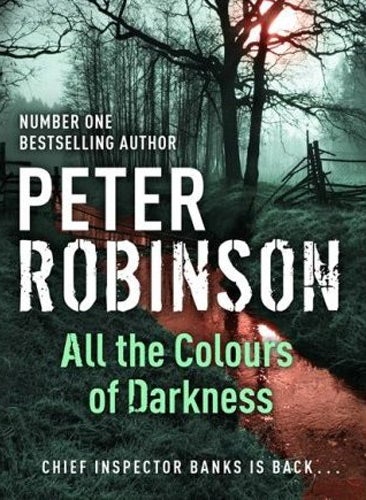All the Colours of Darkness, by Peter Robinson
An arresting yet unfamiliar case of déjà vu

Many crime writers lie awake at night, casting around for an innovation that will reinvigorate their exhausted genre. Hasn't everything been done? Alcoholic copper struggling with messy private life? Police superiors who try to bury inconvenient cases? And – the most egregious cliché of all – the conflict between a cynical male copper and his put-upon female colleague, who shows she is no pushover?
Peter Robinson has come up with the perfect solution to this irksome problem. He takes the clashing- male/female-copper motif and shoots it full of adrenalin, always finding some new wrinkle to convince us we are encountering this scenario for the very first time. All the Colours of Darkness, the latest in his sequence featuring DCI Alan Banks and his associate DI Annie Cabbot, is a salutary reminder why readers are so comfortable with the series. It's an old friend, but a friend that can still provoke and pique our attention.
A body is discovered, and the copper in charge (this time Annie Cabbot) is forced to call in her reluctant superior (a notably pissed-off Alan Banks) when it becomes apparent that the killing is something very unusual. It appears to be a double death involving gay partners. Mark Hardcastle, a popular set designer for a Yorkshire theatre, is found hanged near a river. When Annie calls upon his partner, Laurence Silbert, at their expensive house, she finds him lying among the Chagalls and Kandinskys, his head beaten to a pulp.
A murder followed by a suicide? Both Banks and Cabbot are too wily to accept such an easy solution. They begin digging into clandestine areas where all moral parameters are nebulous, and everyone involved – both police and suspects – appears to be in danger.
Is it a compliment to say that reading a Peter Robinson novel is like slipping into a well-worn pair of slippers? Certainly, the reader can relax: all the buttons we expect to be pressed will be satisfyingly pushed, and the comforting rituals name-checked by a consummate professional. But Robinson also has a way of undercutting the genre's familiarity. With a deceptively unspectacular language, he sets about the process of unsettling the reader. Robinson also does plotting with unspectacular assurance – the kind of plotting, in fact, that exerts a considerable grip. Just try putting the book down after a chapter or so: you'll have a problem.
Join our commenting forum
Join thought-provoking conversations, follow other Independent readers and see their replies
Comments